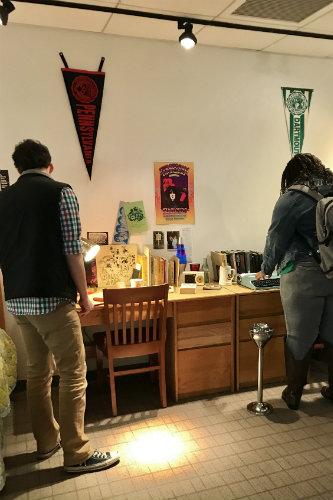1968: Revisiting an Unforgettable Year of Rebellion
1968. It was a year of chaotic revolt against authority: division and disruption at the Democratic National Convention and the nomination of a pig for President of the United States; the Prague Spring and consequent occupation of Czechoslovakia; the Tet Offensive; the assassination of Rev. Dr. Martin Luther King, Jr. and Robert F Kennedy; and student protests all over the world. It was a time of deep-seated distrust of those who brought the Cold War and the Vietnam War.
My First-Year Seminar forever cemented my passion for rock music of the ’60s, ’70s, and ’80s. I now understand music not only as entertainment, but as a dynamic cultural force that is shaped by historical and social eras.
– Shivani Mansharamani
This semester, I enrolled in a one-time-only history course that captures the rawness and unbridled defiance of this pivotal year. The course, like the year, is anything but conventional, with its emphasis on re-creating 1968 with vivid presentations and gallery exhibits rather than through textbook teaching and analysis.
I’ve always been interested in history, and took a memorable First-Year Seminar course that covered the creation and impact of 20th-century protest music on political and social processes of various regions. The course combined two of my interests: music (particularly blues and rock) and modern history. We studied John Lennon, a controversial pacifist who refused to take a stance amid a violent climate; Crosby, Stills, and Nash, a trio who wrote “Ohio” about the students shot during demonstrations at Kent State University; and Bob Dylan, whose song “Blowin’ in the Wind” served as a civil rights protest anthem. My First-Year Seminar forever cemented my passion for rock music of the ’60s, ’70s, and ’80s. I now understand music not only as entertainment, but as a dynamic cultural force that is shaped by historical and social eras.

Our re-creation of a Beaver College dorm room from 1968.
Knowing it would cover some of my favorite music— as well as art and literature in the politically charged year— I lept at the opportunity to take a course on 1968. Taught by Dr. Peter Siskind, chair of the History Department, “Global 1968” commemorates the 50th anniversary of the year. Apart from attending class once a week, there were five events associated with the course, one of which included a gallery exhibit with visual displays of the course content and themes. We also re-created a Beaver College dorm room for local context, and attended panel discussions by faculty members from the History, Sociology, International Studies, English, and Visual Arts departments to learn more about historic, social, and cultural aspects of the time.
The only part of the course that was defined was the beginning foundations portion, which included reading assignments and discussion. The rest of the course allowed for spontaneity, with each group free to explore sub-themes of interest in our final presentations and visual displays. Although the lack of structure seemed disconcerting to me at first, there was beauty in freely exploring the multidimensional historical and political forces— just as the basis of dissent in ‘68 was disorder and spontaneity.
The spontaneity and zeal of this course would be impossible without one key component: involvement. The course culminates in debates, during which we will discuss particular events or bring up questions that arise from the chaos of the era. In a discipline that typically emphasizes structure and the importance of critical analysis, we not only have to place ourselves in 1968 to understand the conditions under which its events took place, but we also have to remove ourselves from biases and observe the historical process as it happened.
Just like the impulsive and spirited reactions of students and other groups in 1968, “‘Global 1968” is powered by our passion to engage in unbiased discourse, which helps us see history not in terms of what we might think is right and wrong, but to objectively analyze what happened in the context of the political and social climate and compare these findings to our world today.



